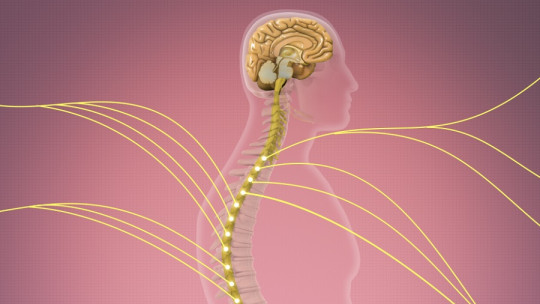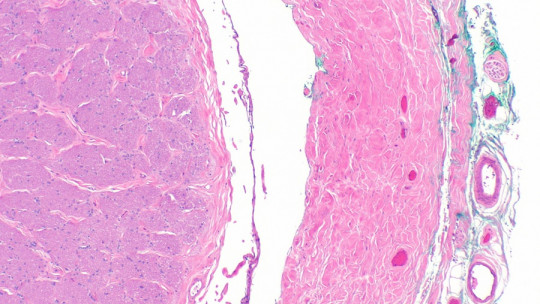Pain is an unpleasant sensory experience that all living beings with a central nervous system can experience On an evolutionary and ethological level, in the natural world, pain is self-explanatory: this emotion keeps us alert and teaches us what we should not approach if we want to survive in the long term.
In our case, the nociceptors (free nerve endings of primary sensory neurons) are the receptors that mainly respond to harmful stimuli. These send impulses through afferent neurons to the spinal cord, and this transmits them to the brain, which interprets the pain signal and provokes the relevant response in the body.
As counterintuitive as it may sound, without pain there is no life, because without the perception of danger there is no concept of “survival.” Can you imagine what the life of a human being must be like with modified pain perception? You don’t have to think much either, because below we will tell you everything about a term widely linked to this idea: central sensitization
What is central sensitization?
Central sensitization can be defined in the first instance as a pathological process of the nervous system that consists of a decrease in the pain threshold, which causes hypersensitivity to harmful stimuli. This event, known as CS by its acronym, is caused by the increase in the excitability of the neurons of the central nervous system (CNS), especially in the second-order spinal neurons.
In this state of hyperexcitability, The neurons involved are more easily activated by potentially harmful signals and tend to amplify the information received as it is transmitted along the nervous tree Thus, it gives rise to a series of pathological conditions that we will see below.
When you respond in such an exaggerated way to a peripheral stimulus, you experience two specific terms. We tell you about them briefly.
1. Hyperalgesia
Central sensitization cannot be conceived without hyperalgesia, as they are two sides of the same coin. This last term refers to the increased sensitivity to pain and extreme reaction to it on the part of the patient. Something that was already painful before now becomes unbearable.
According to the National Cancer Institute (NIH), Hyperalgesia is typical of processes that damage nerves or produce chemical changes in the nerve pathways involved in pain perception Postherpetic neuralgia is a clear example of this, since the place affected by herpes (shingles) can be hypersensitive for 3 months or more after its appearance, due to damage to the superficial nerve fibers.
2. Allodynia
This term is a little different from the previous one, but it is also indivisible from central sensitization. Allodynia occurs when the patient abnormally perceives pain in response to a process that does not normally cause it such as rubbing against a surface or simple palpation of the affected surface.
There are 3 types of allodynia: static mechanics, dynamic mechanics and thermal. The first is defined by the perception of pain with light manual pressure, such as touching the surface of the skin.
On the other hand, dynamic mechanical allodynia is produced by the repeated application of gentle stimuli, such as the passage of a cotton ball or a brush. Finally, thermal allodynia occurs when the patient has special reluctance to mildly hot or cold weather events.
Both terms are different, but they are housed within the umbrella of central awareness. The following idea should be clear to you:
Central sensitization: hyperalgesia + allodynia
Causes of central sensitization
The nickname “central” comes from the fact that, in fact, the problem is located in the Central Nervous System (CNS): the brain and spinal cord As we have said, the neurons responsible for perceiving pain amplify the signal and make it stronger, which is why the patient perceives atypical pain when faced with routine events.
In any case, neurons not only send amplified signals, but also transmit “wrong” information, producing abnormal responses by the organism to common environmental stimuli. It must be taken into account that, to understand central sensitization, it is necessary to factor in that there are predisposing and precipitating factors.
1. Predisposing
Although this series of pathologies are very little known, it is known that there is a certain genetic inheritance for its appearance. central sensitization It usually runs in families and, furthermore, it seems that people who have suffered abuse or traumatic events during childhood are more likely to present it
2. Precipitants
In people with a predisposition, there is usually a precipitant or trigger that causes the appearance of central sensitization. Something as simple as a viral infection can cause it, but it usually happens after accidents and serious injuries, both physical and emotional
As studies indicate, a painful stimulus of great intensity can be the prelude to a series of functional and morphological alterations in the central nervous system (CNS), which translates into the general picture of central sensitization that concerns us here.
Some examples of central sensitization
We have talked until now about central sensitization as a kind of pathology, but this is not exactly the case. This is a common event in several diseases characterized by chronic pain. We will briefly tell you about some of them.
Fibromyalgia
Is about a disorder characterized by the presence of widespread musculoskeletal pain which interferes with the patient’s ability to rest, memory and general mood.
Fibromyalgia usually finds its causes in hereditary factors, infections, and physical and emotional trauma. Something like a car accident or a traumatic situation can lead to the appearance of this chronic pathology, even though it may not seem like it. It is estimated that in certain countries the total prevalence is 2.4% of the general population over 20 years of age (generally between 35 and 55 years), being 6 to 8 times more common in women than in men.
Chronic Fatigue Syndrome
Chronic fatigue syndrome is a serious condition that affects many systems in the body simultaneously. This is characterized by severe fatigue that makes it impossible to carry out routine actions, sleeping problems, difficulty concentrating, generalized pain and recurrent dizziness
In the United States alone, it is estimated that between 836,000 and 2.5 million people have chronic fatigue syndrome. This occurs mainly in people between 40 and 60 years old and, again, is more common in women than in men.
Irritable bowel syndrome (IBS)
Maybe this pathology sounds more familiar to you, right? Well yes, even if you didn’t suspect it beforehand, irritable bowel syndrome and central sensitivity are widely correlated
In a society increasingly dominated by stress and worries, IBS occurs in up to 20% of the global population, depending on the population focus consulted and the socioeconomic conditions that exist there. Various factors codify its appearance: genetic, health, dietary, cultural and emotional, among others.
The most common symptom of this pathology is chronic abdominal pain, accompanied by cramps and bloating which is usually completely or partially relieved when evacuating the intestines (defecating or passing gas). It also causes diarrhea or constipation and mucus in the stool, among other things.
Diseases without treatments
Unfortunately, diseases that present with central sensitization are largely unknown and, therefore, treatments are limited. In most cases, the goal is for the patient to learn to manage their pain and minimize it, but it is never completely eliminated
For example, drugs such as analgesics, antidepressants, and anticonvulsants (epilepsy medications) have been shown to be effective for some cases of chronic pain, although they are not universally effective treatments. All of this must be accompanied by robust psychological care for the patient, dominated by physiotherapy, occupational therapy and psychological counseling, among other things.
Summary
As you may have seen, central sensitization is a general pathological picture that is very little known, since the causes are never elucidated in many patients If anything is known, it is that it manifests itself in the form of hyperalgesia and allodynia and that, in addition, it is part of a large number of diseases.
Unfortunately, in most cases little remains beyond resistance and resignation in the patients who suffer from it. Sometimes chronic pain cannot be addressed and, therefore, you just have to live with it and learn to manage it.









